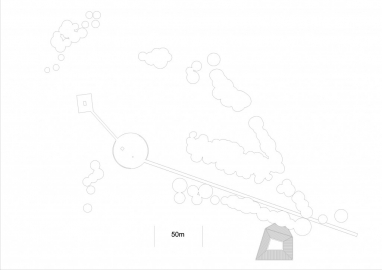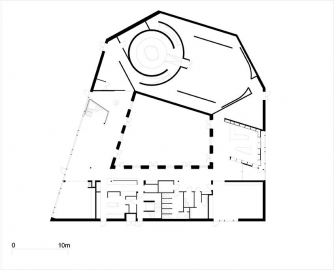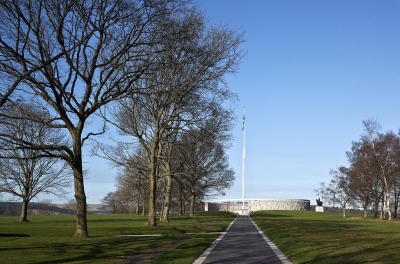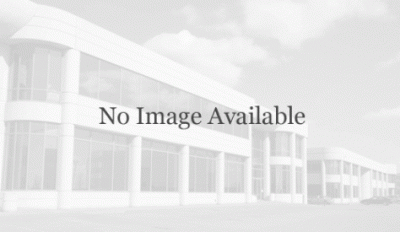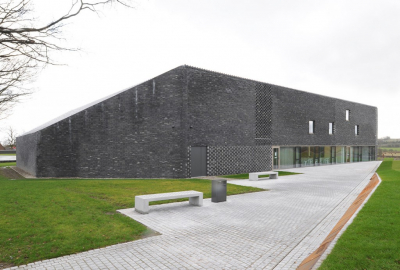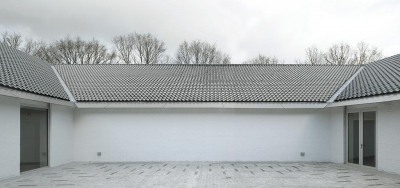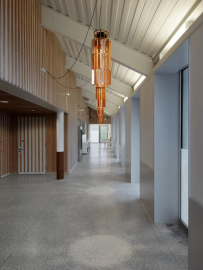Bannockburn Battlefield Visitors Centre
The Battle of Bannockburn was an extra-ordinary event. A great victory was secured against the odds through intelligence, passion, an intimate understanding of the terrain and by the collective actions of ordinary people. The ordinary can occasionally be transformed into the extra-ordinary.
Our approach was to attempt to find an equivalent memorable and indelible image that alludes to the importance and seriousness of the battle, made manifest through ordinary forms and materials.
The overall project consisted of 4 complimentary parts: significant conservation work to the category A listed monuments, including the Rotunda, the magnificent bronze Equestrian Statue, the Flagpole and the Cairn; improvements to the overall landscape of the site and landscape works associated with the new visitor centre; a new visitor centre and a radical dramatic exhibition and interpretation of the Battle.
The role of the visitor centre is concerned with increasing the understanding of two fundamental issues, landscape and its part in the victory and the telling of a remarkable story. The new landscape design and the design of the new building attempt to give a sense of discreet dignity to this historic battlefield through simple and durable forms and materials. The drama of the story however has been retold through ground breaking digital technology allied to exhaustive historical research and incorporating an exhibition and audio-visual presentation that illustrate the battlefield events of June 1314, when King Robert the Bruce routed the forces of King Edward II to win freedom for the Scots from English domination.
The new building sits quietly to the side of the main avenue approach that links the entrance off the Glasgow Road to the hill top monuments with their open prospect over the battlefield to Stirling Castle.
The building proposals imagine a simple ensemble of resonant and evocative forms. The exterior has been designed to suggest traditional building forms and materials yet rendered unfamiliar and ambivalent through their finish and detail. The external facades are textured and patterned in the manner of cloth or chainmail. On entering the almost austere form gives way to light filled airy interiors.
The new building offers the visitor two things, hospitality and information. A courtyard or steading form symbolises shelter and hospitality through the creation of an enclosed place; a clearly defined defensible space that captures the sun and protects from the wind. To the south of the courtyard lie all the service spaces, toilets, stores, kitchen, offices, all vital to the efficient running of the centre. To the west lies the café with views to the monuments and to the east the shop and entrance reception.
To the North of the courtyard lies a generous Hall along with Prologue and Epilogue spaces that offer simple flexible vessels for the interpretive installations and exhibition spaces.
The overall project is about landscape and the route to the Rotunda, the statue of Bruce and beyond. The site is about understanding how and what happened on those fateful days; it is about contemplation. The new building through its colour and texture is designed to stand apart from these important acts. It is an observer, it seeks the shadows. In the spirit of a Northern Romanticism, the colour, tonality and form of the building and its location within a particular landscape are designed to promote a sense of reflection.
The final building design was not about a superficial lust for architectural gymnastics, it is an exploration into the making of a simple, honest and purposely serious building that has its roots in a remarkable story, landscape and architectural culture both ancient and contemporary.

